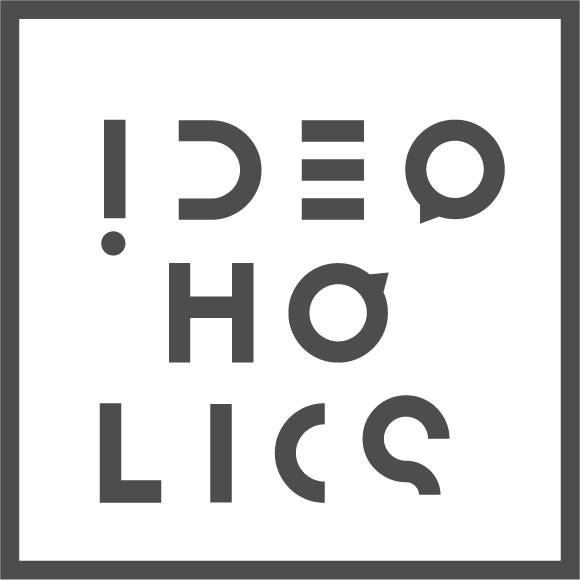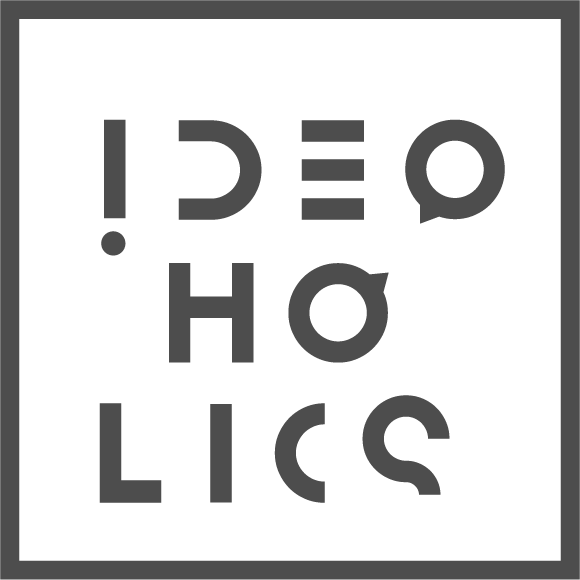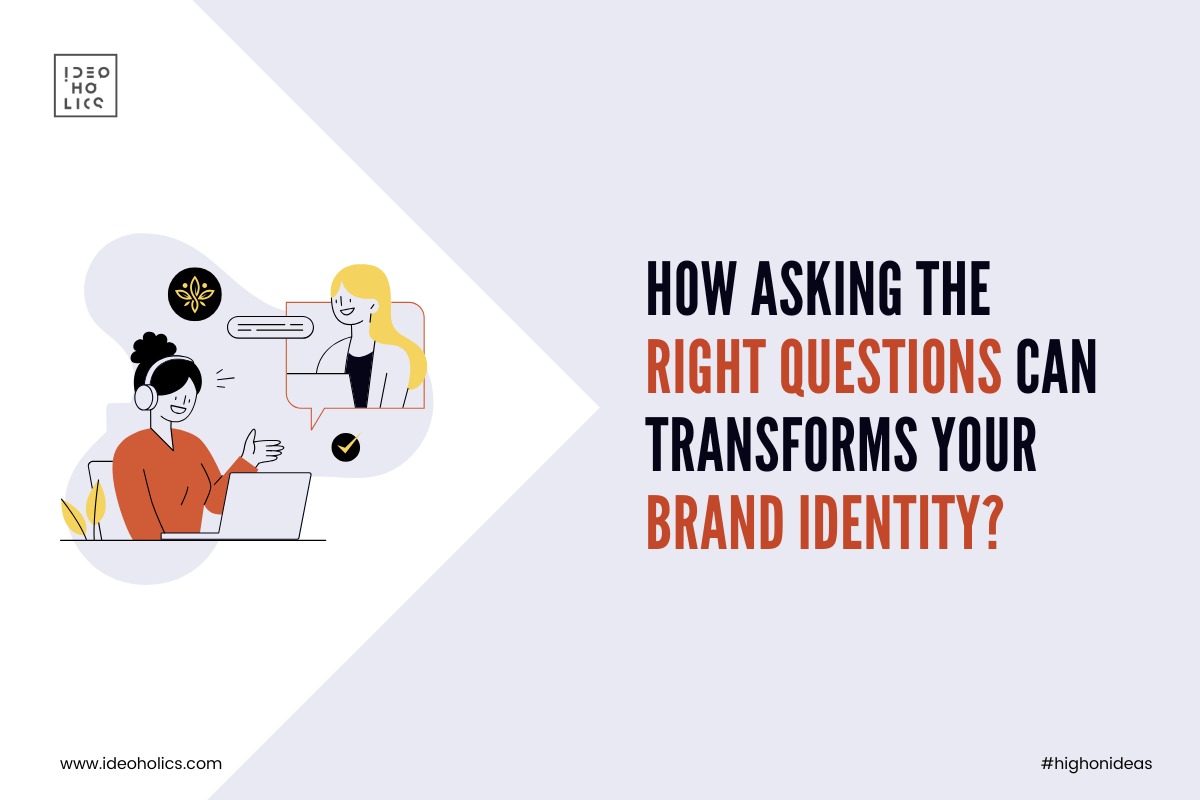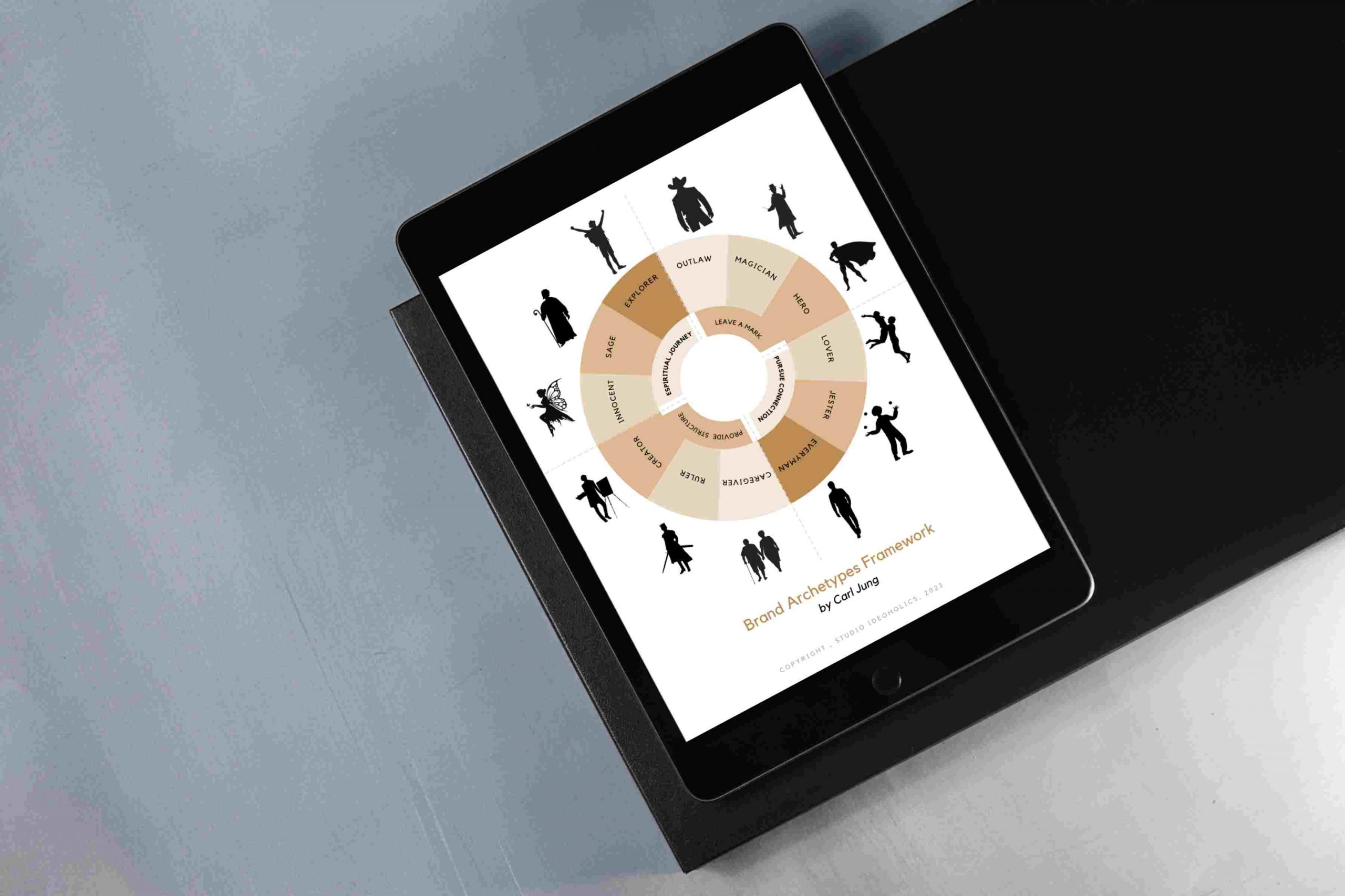
Unlocking the Secrets of Brand Archetypes
How to Harness the Power of Personality for Unforgettable Branding
Brand personality
refers to the human-like characteristics and traits that a brand is attributed with, which helps shape its image and perception in the minds of consumers. It involves associating human personality traits, values, emotions, and behaviors with a brand to create a relatable and emotional connection with consumers.
To figure out which brand archetype a brand falls under, it’s important to conduct a thorough analysis of the brand’s values, characteristics, target audience, and market positioning. Here are some steps that can help in determining the brand archetype:
Define the brand’s values:
Identify the core values of the brand, which represent its guiding principles, beliefs, and ethics.
Understanding the brand’s values can help align it with a relevant archetype.
Know the target audience:
Understand the characteristics, preferences, and behaviors of the brand’s target audience.
Consider what resonates with them and how the brand can connect emotionally with them through an archetype.
Evaluate brand characteristics:
Analyze the brand’s unique characteristics, traits, and attributes. Consider the brand’s tone of voice,
visual elements, and overall brand persona.
Research competitor brands:
Research and analyze the archetypes of competitor brands in the market to identify gaps and
opportunities for the brand to differentiate itself.
Consider brand positioning:
Consider how the brand wants to be positioned in the market and how
an archetype can align with that positioning.
Conduct consumer research:
Conduct consumer research, surveys, and focus groups to gather feedback and insights on
how consumers perceive the brand and its personality.
By considering these factors, a brand can identify the brand archetype that best represents its
personality and aligns with its target audience and market positioning. It’s important to remember
that brand archetypes are not set in stone, and a brand may evolve and adapt its archetype over time
based on changing market dynamics and brand strategies.
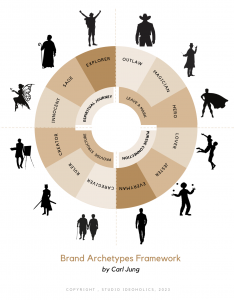
Archetypes are based on the concept of collective unconscious, as developed by psychologist Carl Jung, and they tap into deep-rooted human emotions, motivations, and behaviors. Brand archetypes provide a framework for understanding and creating brand personalities, which can help guide branding strategies, messaging, and visual elements.
There are several different models of brand archetypes, and different sources may categorize them in slightly different ways.The Personality types are divided into 4 broad categories based on the purpose behind each personality type.
Jung classified the twelve archetypes within a matrix of four categories: freedom, social, order, and ego (fig. 1). Mark and Pearson use a similar matrix that overlay with different verbiage. Their categories are independence, belonging, stability, and mastery.
This matrix and these archetypes apply not only to brands but products, experiences, services, and anything money can buy. It is the essence of an organization. This is a system for managing meaning in brand.
These brand archetypes should be used as a filter so that all brand visuals, language, and feelings reflect the core brand archetype — the core self (ego) of the brand. These archetypes represent a core brand charter. They are means of awareness, attraction, and engagement — key relationships to customers.
We are offering a FREE E-Workbook where you can follow step-by-step method to understand your Brand Personality type , i.e, your Brand Archetype.
